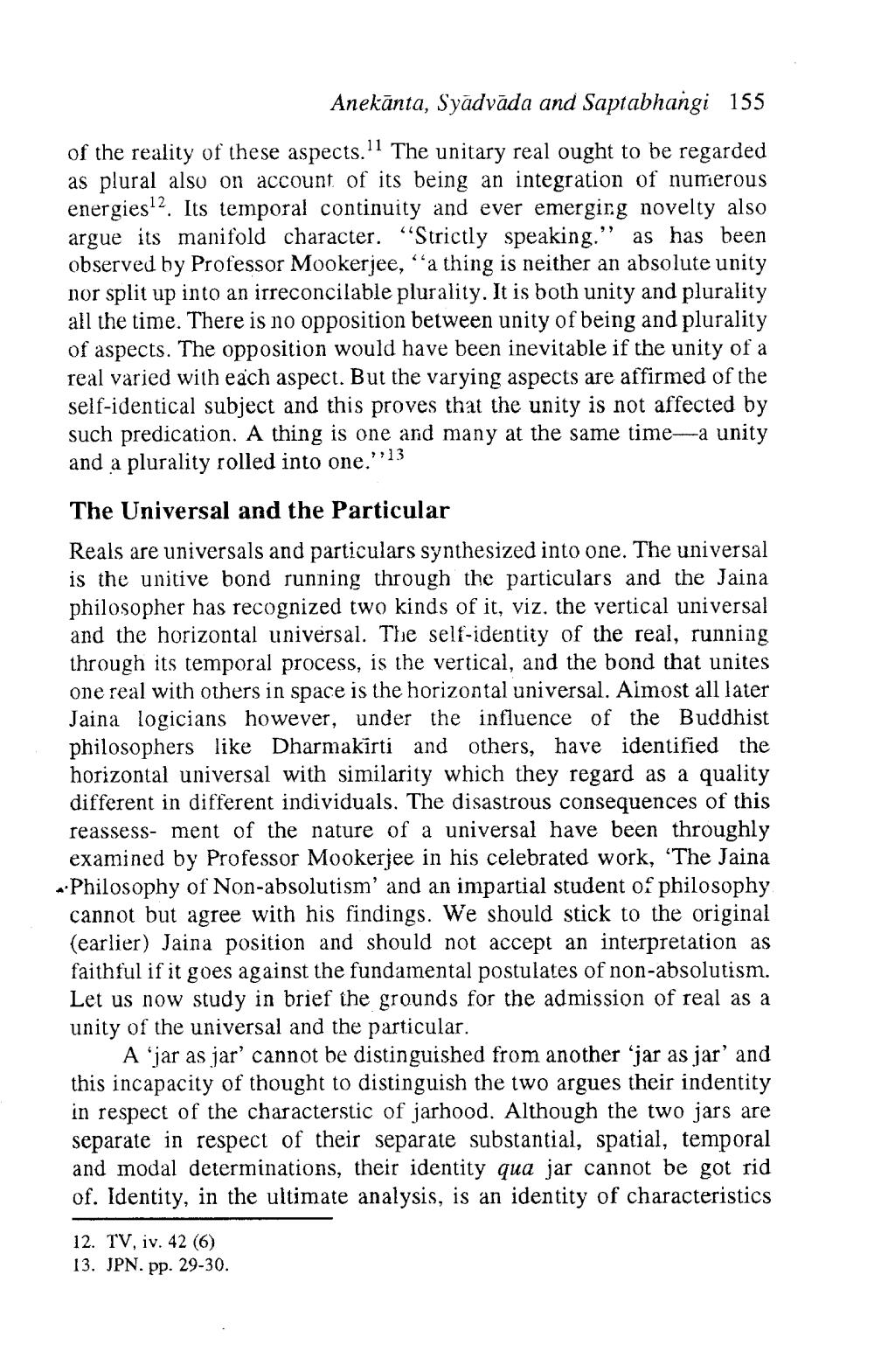________________
Anekānta, Syadvāda and Saptabhangi 155
of the reality of these aspects. The unitary real ought to be regarded as plural also on account of its being an integration of numerous energies?2. Its temporal continuity and ever emergirg novelty also argue its manifold character. "Strictly speaking." as has been observed by Professor Mookerjee, "a thing is neither an absolute unity nor split up into an irreconcilable plurality. It is both unity and plurality all the time. There is no opposition between unity of being and plurality of aspects. The opposition would have been inevitable if the unity of a real varied with each aspect. But the varying aspects are affirmed of the self-identical subject and this proves that the unity is not affected by such predication. A thing is one and many at the same time—a unity and a plurality rolled into one.'13
The Universal and the Particular
Reals are universals and particulars synthesized into one. The universal is the unitive bond running through the particulars and the Jaina philosopher has recognized two kinds of it, viz. the vertical universal and the horizontal universal. The self-identity of the real, running through its temporal process, is the vertical, and the bond that unites one real with others in space is the horizontal universal. Almost all later Jaina logicians however, under the influence of the Buddhist philosophers like Dharmakirti and others, have identified the horizontal universal with similarity which they regard as a quality different in different individuals. The disastrous consequences of this reassess- ment of the nature of a universal have been throughly examined by Professor Mookerjee in his celebrated work, 'The Jaina -Philosophy of Non-absolutism' and an impartial student of philosophy cannot but agree with his findings. We should stick to the original (earlier) Jaina position and should not accept an interpretation as faithful if it goes against the fundamental postulates of non-absolutism. Let us now study in brief the grounds for the admission of real as a unity of the universal and the particular.
A ‘jar as jar' cannot be distinguished from another 'jar as jar' and this incapacity of thought to distinguish the two argues their indentity in respect of the characterstic of jarhood. Although the two jars are separate in respect of their separate substantial, spatial, temporal and modal determinations, their identity qua jar cannot be got rid of. Identity, in the ultimate analysis, is an identity of characteristics
12. TV, iv. 42 (6) 13. JPN. pp. 29-30.




